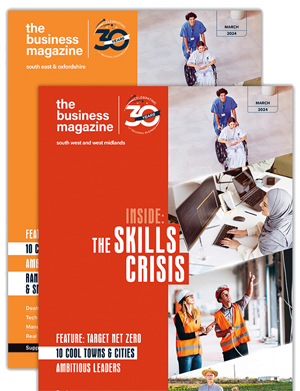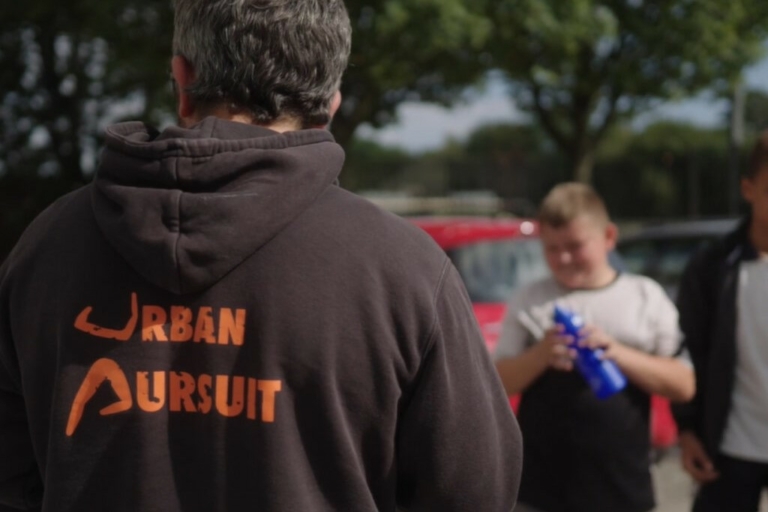Crosscurrents, but a favourable wind

At the time of writing in mid-February, the world longs for the new dawn that 2021 promised. We face successive waves of Covid-19 infections and extended lockdown restrictions. Economic activity has been hit, particularly in services businesses, and we have also witnessed some post-Brexit disruptions, writes Jeremy Hill from Kleinwort Hambros’ Newbury Office.
Considering the disastrous economic picture which unfolded following last year’s lockdowns, this time is materially different. The UK is a case in point, with data showing the third consecutive month of improved business optimism – the strongest since May of 2014 – as the UK’s vaccine rollout so far in 2021 has been a success, fuelling hope of a strong economic rebound later this year.
The USA has taken a much less stringent approach, leaving individual state governors to decide on restrictions. As a result, mobility data for retail and recreation activities show a relatively modest 25% decline from pre-pandemic levels whereas the falls in Europe range from 45 to 65% (ie Eurozone services survey tumbled to 45.0 points, well below expectations). Unsurprisingly therefore, business confidence in the US has remained buoyant in both manufacturing and services.
Much will depend on the speed with which countries can ramp up their inoculation programmes. The first movers in vaccination – notably the UK and the US – have made great strides, with about 19% and 12% of their respective populations already inoculated* – only Israel and the UAE are ahead, both with much smaller populations.
Recovery in Asia is much less dependent on vaccines. China – a critical source of global aggregate demand – actually saw its economy grow 2.3% last year and will likely see growth accelerate to over 8% in 2021, a level that hasn’t been seen since 2011. Moreover, China has not had to resort to the type of monetary easing employed by the US Federal Reserve and the European Central Bank (ECB). Nor has fiscal stimulus been necessary for China’s recovery at the scale seen in the West. According to the Institute for International Finance, Beijing’s government debt to GDP ratio rose by 10.1 percentage points (pp) to 63.0% between Q3 2019 and Q3 2020 whereas the US piled on 25.5pp over the same period, taking its ratio to 127.2%, the highest level ever recorded in peacetime.
More is to come in Washington. Donald Trump signed a $900 billion support bill in late December and his successor President Biden, has proposed a supplementary $1,900 billion package, together representing some 13.4% of GDP. Some worry about the potential market distortions or inflationary effects caused by all this stimulus, but it has prevented the world’s largest economy from falling into a deep abyss, having regained roughly three-quarters of the output lost during the first half of last year, and over half of the jobs.
While there are worries about the inflationary impact of all this stimulus, we don’t consider sustained, structural inflation a serious risk at present for a variety of reasons, including large output gaps and low money velocity. This is not to say headline inflation may not jump in the short term given rising food and fuel prices – but it is probably wise to look through such transitory factors.
Bottom line
On balance, we believe risk assets – particularly equities – remain compelling, supported by strong momentum and a recovering global economy.
We remain comfortable with our risk-on stance given a strengthening economic backdrop, strong momentum and tolerable valuations, especially given stronger than expected earnings. However, we are cognisant of downside catalysts. These include vaccine-resistant coronavirus mutations, logistical setbacks in mass inoculations or a less supportive monetary and fiscal policy backdrop than expected – higher inflation, should it come, may cause rates to rise faster than expected, challenging risk assets. Therefore, we continue to hold significant safety assets as a form of risk mitigation – these include gold and low-volatility, defensive alternatives (eg hedge funds).
As ever, we are constantly monitoring markets. Should conditions change, particularly with the economic regime, or signals from our valuation, momentum or sentiment framework, we will adjust our asset allocation accordingly.
*As of February 9 2021, counted as a single dose and may not equal the total number of people vaccinated, depending on the specific dose regime (eg people receive multiple doses) – ourworldindata.org/covid-vaccinations.
In accordance with the applicable regulation, we inform the reader that this material is qualified as a marketing document.
020 7597 3445












